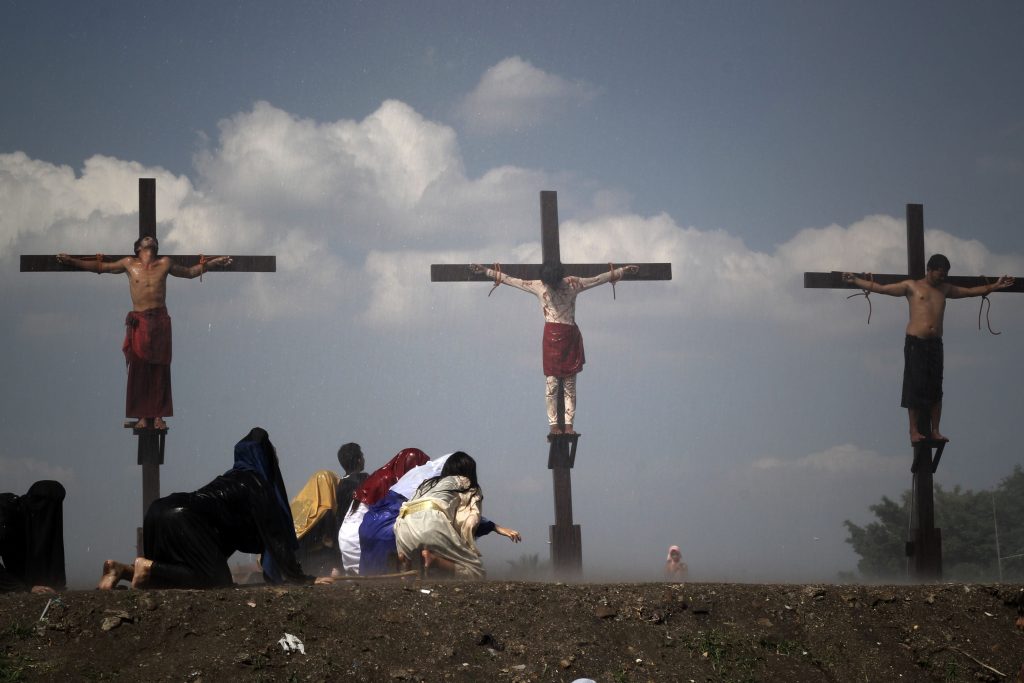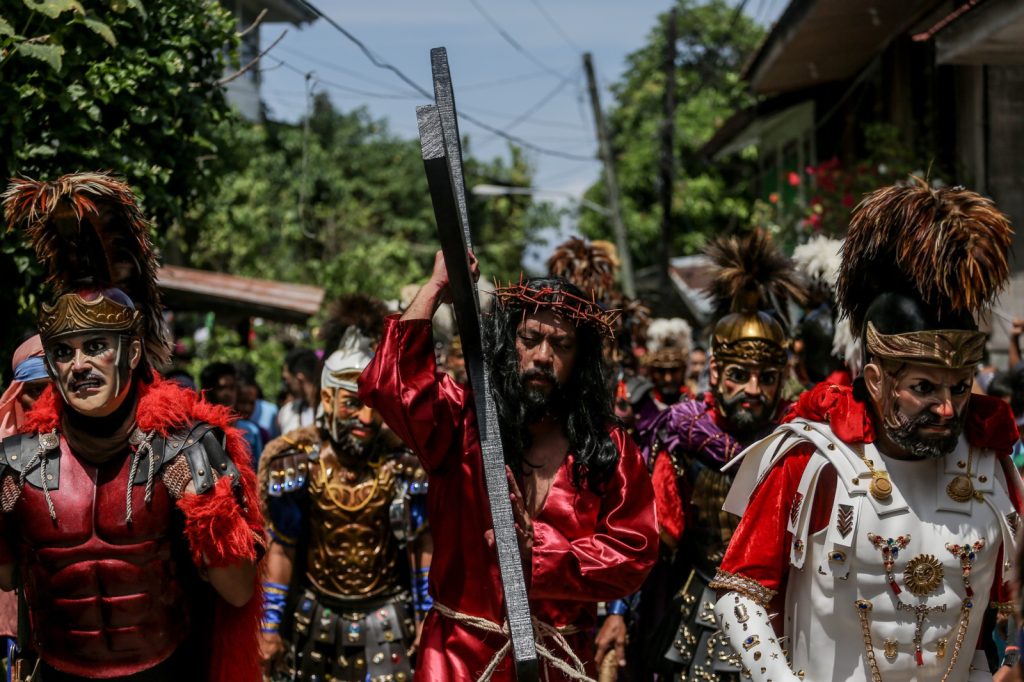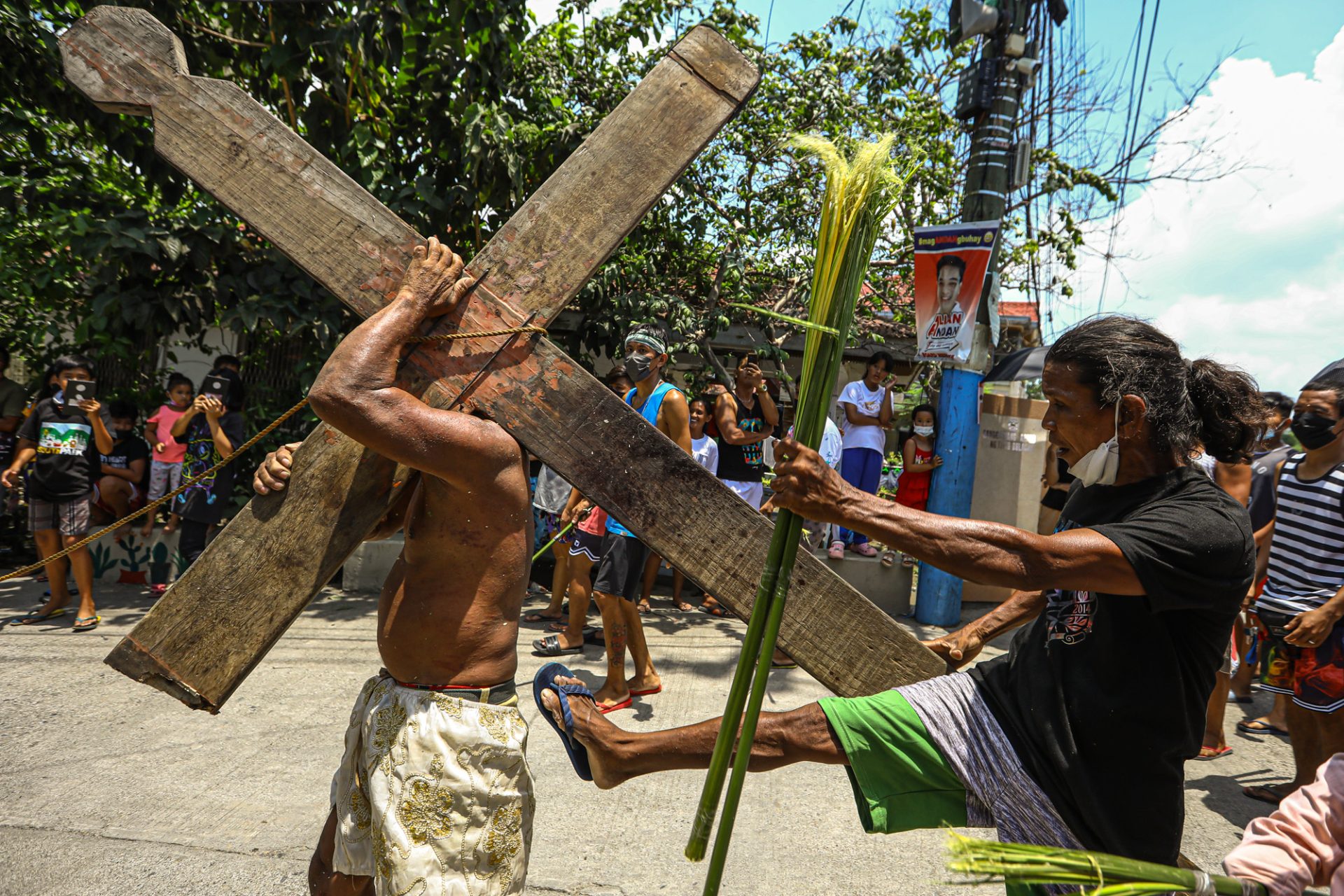It was Holy Week of 2012 when I accompanied my Filipino-Australian cousin, Jeremy Baltazar, to witness one of what can be considered as an extreme act of devotion in the Philippines.
Jeremy said that watching a Filipino penitent engage in self-flagellation is not for the faint of heart.
During my younger days, I used to wait for the procession of the “penitensya” from the Malibay area in Pasay City. I would sit and wonder why they would do it every Good Friday.
Filipino Catholics are known for their sincere but extreme expression of piety. The devotion and faith of devotees have become a manifestation of the marriage of Catholic and secular beliefs.
Lent is the commemoration of the suffering and death of Jesus until his resurrection. It is a 40-day observance that begins on Ash Wednesday and ends on Easter Sunday.
Catholics see this season as a time for personal conversion and atonement of sins. Many Filipinos perform rituals in the week leading to Easter in the hope that they will be cleansed of sins and illnesses.
Devotees flock to churches for confessions and prayers. Penance and sacrifices, such as abstaining from eating meat and fasting on Ash Wednesday and Good Friday, are observed.
Some penitents enact a much greater mortification on Good Friday – flagellation and crucifixion.
Flagellation (from Latin “flagellare,” to whip) rituals are built around processions, hymns, distinct gestures, uniforms, and discipline.
Flagellants — hooded, half-naked men — scourge themselves by cutting their back, chest, arms and legs with a blade or a knife, then whip their backs with bamboo-tipped burillos, or with whips embedded with thorns and glass shards.

Some participants carry crosses and lie down on the scorching concrete with arms spread wide as they are hit on the back with wooden paddles.
For many flagellants, it is not enough that they confess their sins. Serious injuries must be inflicted upon themselves so that they will be convinced that their sins have been forgiven. They believe that by punishing the body, their sins would be absolved.
Some do it as an act of sacrifice for the welfare of their families, or to re-live the pain and sacrifice of Christ in the hands of Roman soldiers
Flagellation and self-flagellation are widespread practices many parts of the country and around the world.
It was featured in movie “The Da Vinci Code” when Silas whipped himself with a “discipline,” a knotted cord, and wore a cilice, a spiked chain worn on the upper thigh.
In the Moriones festival in Torrijos, Marinduque, I witnessed an actual live crucifixion. The Moriones refers to the masked and costumed penitents who march around town for seven days to search for Longinus.
The re-enactment of Jesus Christ’s crucifixion started with the staging during the Holy Week in 1955 of the street play “Via Crucis” in Pampanga province by poet-playwright Ricardo Navarro with Pedro Cutud playing the crucified Christ. The actual live crucifixion only happened in 1961 when Arsenio Añoza made a vow to nail himself to a cross every Holy Friday.
The “penitensya” and crucifixion are sometimes associated with “religious dark tourism” that attracts thousands of local and international tourists every year.

Remembering the passion and death of Christ through flagellation and crucifixion has become the perfect ingredient of visitor economy.
Health officials have been reminding participants to ensure that nails and other sharp objects that will be used during the acts are sterilized to avoid contracting infection.
A disturbing practice is the use of a razor blade or a small wooden plank embedded with glass shards to prick the skin of the back to ensure bleeding before the flogging starts.
The Catholic Church has discouraged these activities that are considered as “extreme misinterpretations” of faith.
“We are doubtful that these are real expressions of Christian faith,” read a 2015 statement of the Catholic bishops’ conference. “These are expressions of superstitious beliefs and usually done for tourism purposes,” it added.
Atty. Dennis R. Gorecho heads the seafarers’ division of the Sapalo Velez Bundang Bulilan law offices. For comments, e-mail [email protected], or call 09175025808 or 09088665786







